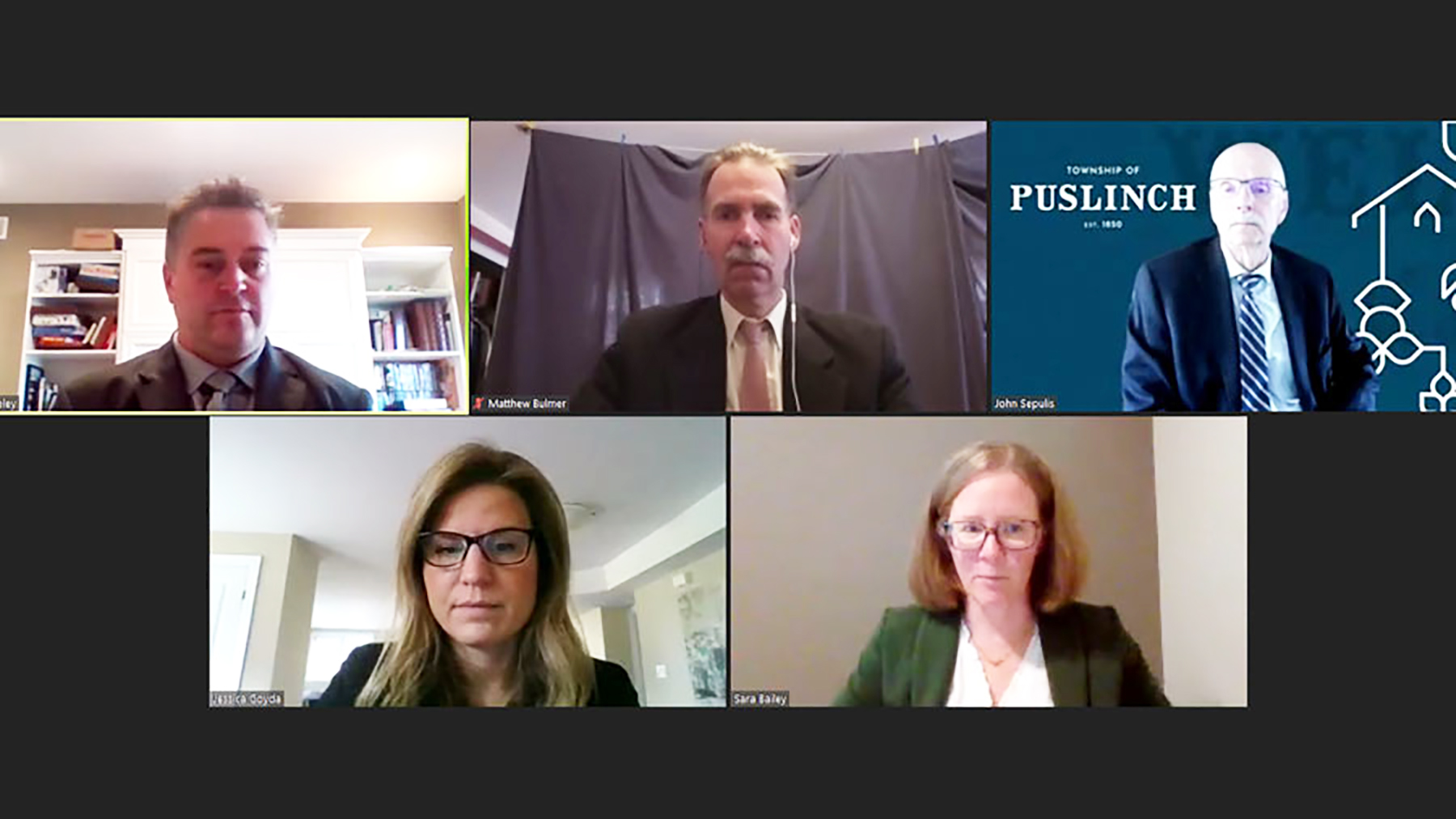PUSLINCH – The City of Guelph has exhausted water sources within its municipal boundary and is eyeing Puslinch and Guelph/Eramosa as locations for future wells, in addition to two city water sources already located in the neighbouring townships.
This raised alarm bells for Puslinch councillors at their April 13 meeting.
Council received an update on talks between the city and the two townships from Stan Denhoed, a senior hydrogeologist with Harden Environmental that is retained by the township, and Kyle Davis, the risk management official with Wellington County.
“The city has maxed out its water supply within its boundary … With this plan for wells on the edge, there are implications for lower water levels in the immediate area,” Denhoed told council.
Puslinch and Wellington County are already hosts to the city’s Arkell Spring well, and Guelph/Eramosa has allowed intake from the Eramosa River to serve Guelph’s water needs.
The city is updating its water supply master plan and with anticipated growth, it is looking for alternate sources of water.
City staff presented the proposed update to Puslinch council last fall and the main complaint at the time was that the township hadn’t been consulted.
That hurdle, at least, has been surmounted.
Puslinch and Guelph/Eramosa have both had meetings with city staff, “and Guelph staff have delayed their final presentation (to Guelph council) to included engagement with us,” Davis added.
Several concerns remain with the city’s plan, however.
While the Guelph plan considers projected growth in the city, it does not take into account residential and industrial growth in Puslinch.
The township also has concerns about the impact on private wells if another well is added for Guelph’s water supply and about the possibility of introducing contaminants into water as there are already holes in the aquitard.
Denhoed said there really needs to be a regional approach to water because it all comes from the same place.
“There is a limit on how much we can ask of the environment,” said Denhoed, adding aggregate mining also affects the water table and the quality and quantity of drinking water here.
“A regional group would use the modelling to allocate water appropriately.”
Denhoed said the township really needs its own test wells so it can monitor the aquifer and collect its own data and not rely on information provided by outside sources. This is a costly proposal, however.
Davis said if Guelph adds new municipal wells close to or within Puslinch, that will expand the wellhead protection area and could potentially put Puslinch in the “at risk” category.
And that would impact future land use decisions.
“Doing business as usual needs to change,” Denhoed said.
“Adding more wells may be possible, but is it palatable? Long term we are going to have to rethink our water use.”
“We’re in the fight of our life for water quotas,” said Mayor James Seeley. “It’s just like urban sprawl.”
Council voted in favour of Harden Environmental providing a report on the feasibility of Puslinch starting its own water monitoring program with test wells, and to consult with Guelph/Eramosa on developing a program in tandem.




